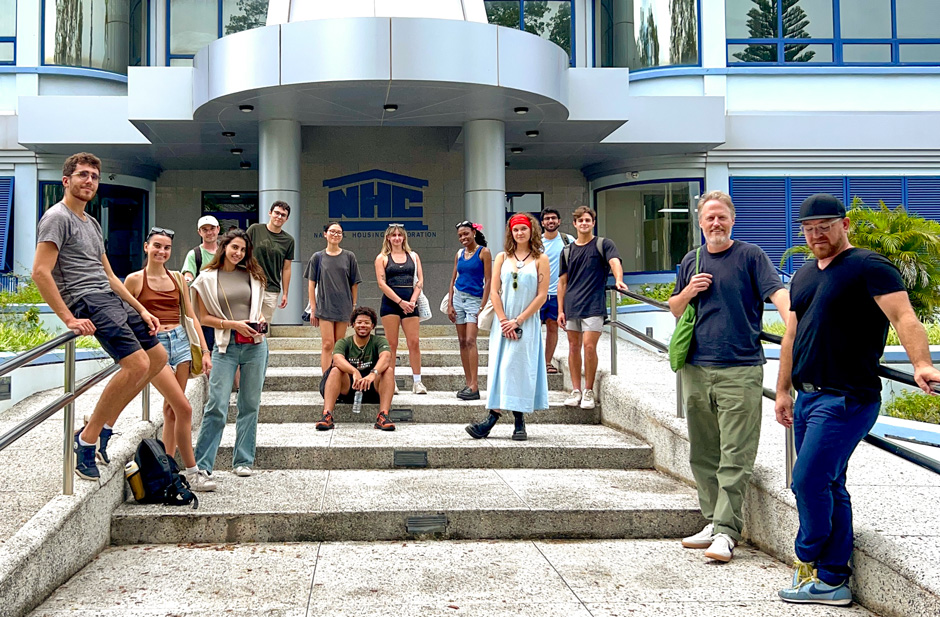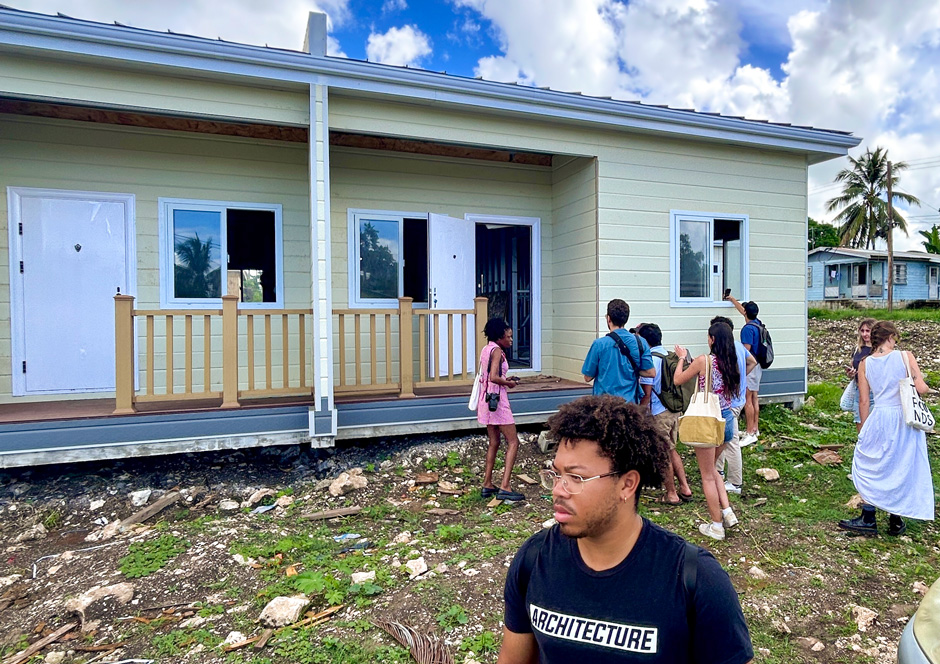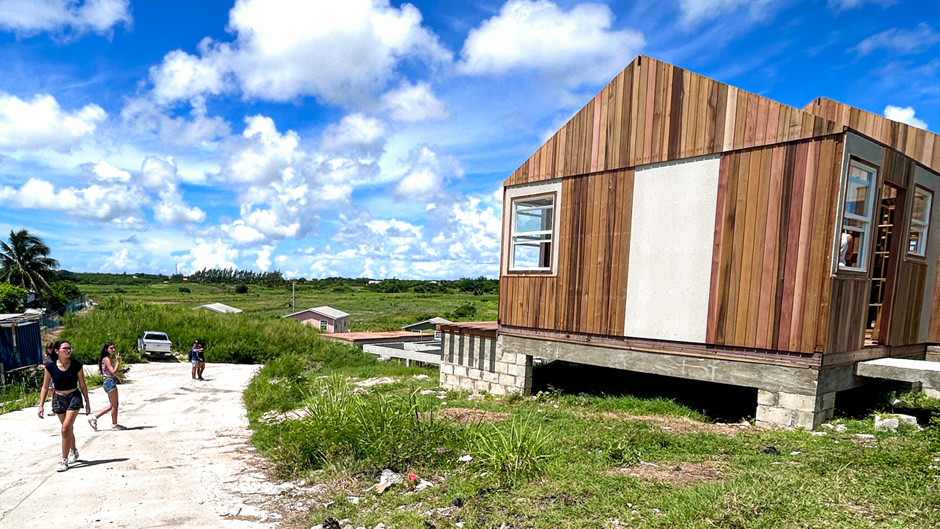Twelve University of Miami School of Architecture students studying in an upper-level studio class on Houses and Housing travelled to Bridgetown, Barbados, in late September to assess how they could contribute to the development of new housing in the capital and its surrounding area.
The class, taught by Chris Meyer, assistant professor and director of the Littoral Urbanism Lab, and Jonathan Tate, lecturer, was funded by a grant from the U.S. Department of Agriculture. The grant encourages the expansion of wood markets and the use of wood in building structures. “Wood is a renewable resource and a construction material that is considered to be environmentally friendly and healthy,” said Meyer, who travelled along with Tate to the island with the students.
They chose Barbados because Tate had professional connections there that allowed the group to meet with housing officials and government agencies, he said. The group met withDwight G. Sutherland, minister of Housing, Lands, and Maintenance, and heard from his planning team at the National Housing Corporation (NHC) and toured several of the NHC’s social housing sites and projects under construction.
“UM has a strong interest in hemispheric affairs, and we are aware that Barbados imports materials from other locations,” said Meyer. “We are ready if there is an opportunity for us to play a role in their housing development.”

Bridgetown, the capital of Barbados, has a population of around 110,000. It is facing population growth and needs housing. To address this need, the Barbados Housing Authority has pledged to build 10,000 dwelling units in the next five years.
“The visit was interesting because Barbados wasn’t familiar to any of us but is facing a similar housing crisis as most of the U.S.,” said Tate. “Not knowing a place is sometimes the best way to learn about a place. We hope this will allow students to challenge the way they work or think about design.”
The island capital is dotted with densely built neighborhoods of multicolored, one family chattels or houses with little space around them, said three of the students in the class. Taking into consideration the weather conditions, houses are constructed with cross-ventilation features and shaded areas for people to take refuge, said Meyer.
“It's important to remember that the Bajan communities cannot use energy as freely as we do here in the U.S.,” said Meyer, using the common term for people from Barbados. “These islands are in the path of storm cycles. It is important for their building to be tough and durable, but they must also be open for natural ventilation when there is no power.”

Among the cultural features that are important to the residents is a porch or veranda for people to congregate, said Jadian Ricketts, a third-year master’s student.
“Gathering spaces are very important to them, and we saw a lot of verandas and porches where people sit and talk,” said Ricketts.
Barbados officials also want to revitalize the downtown area and create an urban core that combines retail stores on the first floor and dwellings on the second floor.
“If there were retail and commercial spaces on ground floors, it would always be lively, and it would not feel like a ghost town,” Ricketts said.
Matthew Jarmin said the trip was extremely useful because it showed him real-life challenges. For instance, although Bajans prefer single family housing, the severe need for housing may force the housing authority to build three-floor buildings with several housing units.
“We are answering hard problems, and I had not been exposed to housing in a realistic manner, so for me the value was getting down at a grassroots level and understanding what people value versus a top-down approach,” he said.
As part of their year-end project, the students will develop three proposals for how to address the housing shortage on the island. They have been tasked with creating architectural drawings for multi-family housing in several of the neighborhoods of Bridgetown.
Lisa Chen, a fourth-year student, is working on her project of creating multiple, multi-story complexes that house a total of 14 units, each three-bedroom, two-bathroom at around 1,200 square feet. But keeping in mind that Barbadians value a sense of community, she is creating green spaces around the buildings for socializing, barbecuing, as well as common areas to hang laundry (something that is a cultural staple).
Her units will also have views of the nearby Constitution River. Once the plans are completed at the end of the semester, they hope to present their work to the Barbados authorities.
“Although Barbadians don’t like to live in apartments, there are ways to add more character and a sense of community to our developments,” Chen said.
